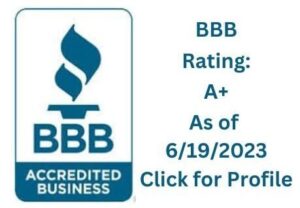When water or fire damage occurs in your home or business, the aftermath can be overwhelming. Not only do you have to deal with the emotional toll of the damage, but also the practical task of getting things back to normal. That’s where restoration services come into play. However, understanding how the restoration insurance claims process works can be just as confusing as dealing with the damage itself.
At Green Water & Fire, we understand the complexities of navigating the insurance claims process. In this post, we will guide you through the key steps of filing an insurance claim for water or fire damage, ensuring that you understand your rights, responsibilities, and how to make the most of your coverage.
Understanding Restoration Insurance Claims
Before diving into the details of the claims process, let’s first clarify what we mean by “restoration insurance claims.” Simply put, these are claims you file with your insurance company after water or fire damage to cover the costs of restoring your property to its pre-damage state. Restoration services usually involve cleaning, repairing, and replacing damaged items. These services are typically provided by professionals who specialize in water damage restoration or fire damage restoration.
Step 1: Assess the Damage and Document Everything
One of the first steps in filing a restoration insurance claim is assessing the damage. It’s essential to take your time and carefully inspect every affected area. While it’s natural to want to start cleaning or repairing as soon as possible, you must document everything before doing so. Insurance companies need to see the extent of the damage to process your claim correctly.
What You Should Document:
- Take photographs of all affected areas and damaged items.
- Make a list of items that have been destroyed or need repair.
- Record any structural damage, such as broken windows, damaged walls, or flooring issues.
- Keep track of any emergency measures you took, like turning off the water supply or using a fire extinguisher.
The more thorough your documentation is, the smoother your claims process will be. Be sure to keep copies of all paperwork for your records.
Step 2: Contact Your Insurance Company
Once you’ve documented the damage, it’s time to contact your insurance company to file the claim. Most insurance providers have 24/7 customer service lines that allow you to report damage right away. You’ll need to provide information about the incident, such as:
- The cause of the damage (fire, water leak, storm, etc.)
- The date and time the damage occurred
- A detailed description of the damage
- Any immediate actions taken, such as emergency repairs
It’s important to report the damage as soon as possible because many insurance policies have a time limit for filing claims. If you wait too long, your claim could be denied.
Step 3: The Insurance Adjuster’s Inspection
After you file your claim, your insurance company will likely send an adjuster to assess the damage firsthand. The adjuster’s job is to determine the extent of the damage, verify your documentation, and estimate the cost of repairs. This is where your detailed notes and photos come in handy.
It’s essential to be present during the adjuster’s visit. You want to make sure they have all the information they need to understand the full extent of the damage. If you’ve had any temporary repairs done, like boarding up windows or putting a tarp on the roof, inform the adjuster about those actions.
Step 4: Understanding Your Coverage
Insurance policies can vary significantly from one provider to another, so it’s important to understand your coverage before diving into the restoration process. There are a few key aspects of your policy that you should be familiar with:
- Coverage Limits: This is the maximum amount your insurer will pay for repairs. Make sure your policy covers the full replacement cost of your property and belongings.
- Deductibles: You’ll need to pay a certain amount out of pocket before your insurance kicks in. Check the amount of your deductible, as it will impact the overall claim payout.
- Exclusions: Some policies may not cover certain types of damage, such as damage caused by flooding or certain natural disasters. It’s important to know what is and isn’t covered by your policy.
If you’re unsure about the details of your policy, take the time to speak with your insurance agent to clarify any questions you may have.
Step 5: Hiring a Restoration Company
Once the insurance adjuster has completed their inspection and you have a clear understanding of your coverage, it’s time to hire a restoration company. These professionals specialize in handling water or fire damage restoration and can help you get your property back in shape.
Choosing the Right Restoration Company:
- Look for a company with a strong reputation and positive reviews.
- Ensure that the company is licensed and insured to provide restoration services in your area.
- Ask about their experience with handling insurance claims. Many restoration companies work directly with insurance providers, making the claims process easier for you.
A good restoration company will work with your insurance company to ensure that the repairs are covered and that you receive the full benefit of your claim.
Step 6: The Repair and Restoration Process
Once the restoration company is on board, they will begin the process of repairing and restoring your property. This may involve:
- Water Damage Restoration: This typically includes removing standing water, drying out affected areas, and cleaning and sanitizing spaces.
- Fire Damage Restoration: Fire restoration involves cleaning smoke damage, removing soot, and repairing structural damage caused by the fire.
- Mold Remediation: If the water damage has led to mold growth, the restoration company will take steps to remove it and prevent future issues.
During this process, stay in close communication with the restoration company and your insurance provider to ensure everything is going according to plan. If any additional issues arise that may affect your claim, make sure to document them and notify your insurer promptly.
Final Thoughts on the Restoration Insurance Claims Process
Navigating the restoration insurance claims process can feel complicated, but understanding the key steps and working closely with your insurance company and restoration professionals like Green Water & Fire Services will make the process much smoother. Remember, documenting the damage thoroughly, communicating clearly with all parties involved, and knowing your coverage will help you get the most out of your insurance claim.
While you can’t control when damage occurs, you can control how you respond. By staying organized and informed throughout the process, you’ll be well on your way to restoring your home or business to its pre-damage state.


















